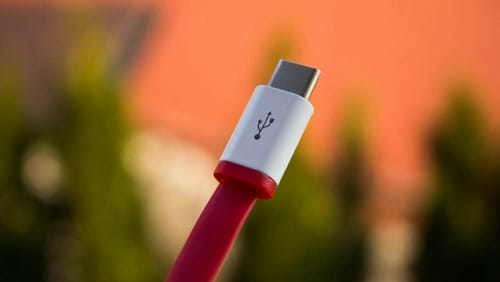 |
| USB-C 2.1 introduced with faster speed and clearer logo |
The USB-C standard is one of the most important connectivity standards today. Most of the major tech companies have started using it in their various devices. Mainly because it supports different forms of login. With the announcement of the extended version of USB-C 2.1, the use of this standard is expected to increase exponentially.
The USB-C 2.1 standard updates the ports used in the device on one side and the connections on the other. The standard is managed and developed by an organization called USB-IF. The popular connection technology now supports data transfer, device charging, and perfect connection between the device and the screen.
Perhaps one of the most important updates to the new version is support for up to 240 watts of power, while the previous generation had a maximum of 100 watts. This ability will be very useful for different types of equipment. Gaming laptops are an example.
This means that devices that use a lot of power (such as laptops) no longer need a dedicated charger and can use USB-C 2.1 directly to connect and support the same standard charger for charging.
The new standard uses the USB PD 3.1 global fast charging standard. As usual upon arrival. Finally, the USB-IF organization has redesigned the logo used on plugs and chargers to reflect their types.
USB-C 2.1 standard for uploading and transferring content
A USB-C charger is different from the port. Usually they all support fast charging. However, some of these models support screen rendering or high-speed file transfer. For this reason, the company has presented a unique logo, as shown in the photo.
The new standard will also support data transfer speeds of up to 40 Gbps, which is very fast. In addition, the image also shows the various logos used in the product body, connectors and connectors.
In addition, a special logo for 240W charging also appeared, which is a distinctive logo in the lower left corner of the image. In general, the USB-IF organization has released more than one incomprehensible label, which makes it difficult to distinguish the correct plugs and chargers.
This is seen in USB 3.1 generation, which is divided into Gen1 and Gen2. The same problem repeats itself in the next generation of USB 3.2, including versions whose names are difficult to understand.
This bad name caused a lot of problems. This is because, as mentioned earlier, when using a desktop computer, users have a hard time choosing the right port, charger, and motherboard.
The organization plans to promote the naming of a new generation of USB4. There will only be two versions, USB4 20 and USB4 40, which is arguably an easier name to understand.
Manufacturers will use the new logo on all devices and products. Even with older versions, choosing the right plug and charger is easy. The new 240W charging capacity should provide significant advantages in the near future.
